The Knights Templars and Friday the 13th
by Peak Crackers - Jun 13, 2014
0 17

by Peak Crackers
Contributor
The history of the Friday the 13th slaughter ..MPC
Bibliotecapleyades
Although the crusaders are commonly thought to have been motivated by their deep Christian faith, crusades were actually wars inspired by avarice. At a time of utmost poverty and misery prevalent in the West, the attractions of the East-in particular, the Muslim societies‘ wealth and prosperity-played on the minds of Europeans, especially those in the Church.
These attractions, bolstered with Christian teachings, begot the crusaders’ mindset, seemly motivated by religion but actually motivated by worldly designs. This is the reason why Christians, who had followed more or less peaceful policies in the previous 1,000 years, suddenly began to display an appetite for war-specifically, the “liberation” of the holy city of Jerusalem and Palestine as a whole.
We can retrace the beginnings of the crusades to November 1095, when Pope Urban II gathered the Council of Clermont. Three hundred members of the clergy convened under his chairmanship. The pacifist doctrines that had dominated Christendom were abandoned, laying the foundations for the conquest. At the close of the Council, Urban II announced this state of affairs in his famous speech to a congregation that comprised all social classes, demanding that Christians stop the infighting and warring among themselves. The Pope called on them-whether rich or poor, aristocrat or peasant-to unite under one banner and to free the holy land from the Muslims. To him, this was “a holy war.”
Historians describe Urban II as a good orator. He intended to incite the Christians against Muslim Turks and Arabs, and succeeded by alleging that the Muslim were assaulting pilgrims and that Christianity’s sacred places were being desecrated.1 Of course, none of this was true.
As historians have confirmed, the Muslims were very tolerant towards Christians and Jews, whom they permitted to pray and worship. All minorities co-existing in the Holy Land benefited equally from this atmosphere of tranquility, created by the moral code of Islam. But because means of communication at the time were terribly primitive compared to today’s, medieval Europeans weren’t aware of this. Owing allegiance to the Vatican in Rome and conducting services in Latin, they knew little about the Eastern Orthodox Church or the Greek-speaking Byzantium, and even less about Islam.
Since what the common people did know amounted to nothing more than hearsay, the Pope found it easy to excite their emotions. Urban II went on to proclaim as an encouragement that for those who participated in the crusade, all sins would be forgiven. The exuberant crowd was distributed fabric crosses to emblazon their garments, and they dispersed to spread the word of the “holy war.”
The overwhelming response to this call made history. In a very short period of time, a massive “crusaders’ army” was assembled, consisting of not only professional warriors, but also ten thousands of ordinary people.
Some historians suggest that the impoverished kings of Christendom, eager to exploit the fabled riches of the East, pressurized the Pope to call a “holy war.” Others find an altogether different motive for Pope Urban II, suggesting that he wished to gain power and prestige for himself at the expense of a rival claiming to be pope. But in reality, all the various kings, princes, aristocrats and others who obliged this call did so for worldly purposes. As Donald Queller of the University of Illinois put it,
Barbarism of the Crusaders
In the summer of 1096, this mob of self-appointed crusaders set off in three separate groups, each taking a different route to Constantinople, where they met up with one another. The Byzantine Emperor, Alexius I, did what he could to aid this force, comprising 4,000 mounted knights and 25,000 infantry troops.3
Raymond IV of Saint-Gilles, Count of Toulouse; Bohemond, Duke of Taranto; Godfrey of Bouillon; Hugh, Count of Vermandois; and Robert, Duke of Normandy commanded this army. Bishop Adhemar of le Puy, the close friend of Urban II, was their spiritual leader.4
After ransacking and setting fire to many settlements and putting countless Muslims to the sword, eventually the crusaders reached Jerusalem in 1099. After a siege of approximately five weeks, the city fell. When the victors finally entered Jerusalem, according to one historian, “They killed all the Saracens and the Turks they found… whether male of female.”5
Crusaders slaughtered everyone they met and looted everything they could get their hands on. They murdered indiscriminately those who had taken refuge in the mosques, whether young or old, and devastated the Muslim and Jewish holy sites and places of worship setting the city’s synagogues aflame, burning alive Jews who had hidden inside. This slaughter continued until no longer could they find anyone to kill.6
One of the crusaders, Raymond of Aguiles, boasts of this incredible cruelty:
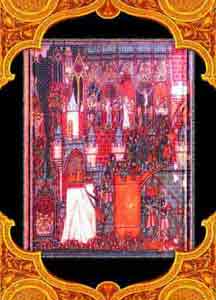
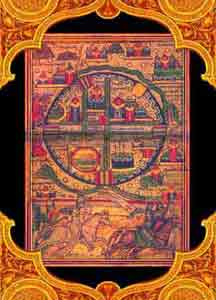 In The Monks of War, researcher Desmond Seward narrates the events of these tragic days:
In The Monks of War, researcher Desmond Seward narrates the events of these tragic days:
The first crusade ended with the fall of Jerusalem in 1099. After 460 years of Muslim rule, the Holy Land came under Christian control. The crusaders established a Latin kingdom that stretched from Palestine to Antioch and made Jerusalem its capital city.
Thereafter, the crusaders began struggling to establish themselves in the Middle East. But to sustain the state they had founded, they needed to organize themselves-and to achieve his, they established unprecedented military orders. Members of these orders had emigrated from Europe and, in Palestine, lived a monastic life of sorts. At the same time, they trained for war against the Muslims. One of these orders went down a different route, undergoing a change that would significantly alter the course of history in Europe and-eventually-the world: the Knights Templar.
Founding of the Knights Templar
About 20 years after the conquest of Jerusalem and the creation of a Latin Empire, the Templars first appeared on the scene of history. Otherwise known as Templars or Knights Templar, the order’s full and proper name was Pauperes commilitones Christi Templique Salomonis, or “Poor Fellow-Soldiers of Christ and the Temple of Solomon.”
(A major part of the information we have today on the Templars was recorded by the 12th century historian Guillaume of Tyre.)
The order was founded in 1118 by nine knights: Hugues de Payens, Geoffrey de St. Omer, Rossal, Gondamer, Geoffrey Bisol, Payen de Montdidier, Archambaud de St. Agnat, Andre de Montbard, and the Hugh Conte de Champagne.
Thus was quietly born one of the most talked-about, effective and powerful organizations of Medieval Europe. These nine knights presented themselves to Baldwin II, the Emperor of Jerusalem, asking him to assign them the responsibility of protecting the lives and property of the many Christian pilgrims now flocking to Jerusalem from all over Europe.
The Emperor knew Hugues de Payens, the first Grand Master of the order, well enough to grant the nine their request. Accordingly, the district where Solomon’s Temple once stood (and by then, included the site of the al-Aqsa Mosque, which survives to this day), was allocated to the order of the Templars, giving the order its name.
The Temple Mount thus remained the order’s headquarters for the next 70 years until, following the battle of Hattin, the great Islamic commander Saladin reconquered Jerusalem for the Muslims.
The Templars had established themselves there by choice, because the site of the Temple represented the earthly power of Prophet Solomon; and the remnants of the temple contained big secrets. Protecting the Holy Land and the Christian pilgrims was the official reason the nine founders gave for joining forces and for creating the order in the first place. But the true reason behind it all was altogether different.
The Order’s Mission
At the time, there were a number of other orders of warrior monks in Jerusalem, but all acting according to their charters. Besides training as soldiers, the Knights of St. John – a large organization also known as the Knights Hospitalers – took care of the sick and the poor and were performing other good deeds in the Holy Land. The Templars, however, had taken it upon themselves to protect the lands between Haifa and Jerusalem-a physical impossibility for the nine knights to shoulder all by themselves. Even then, it was now obvious that they sought political as well as economic gains, quite aside from performing works of charity.
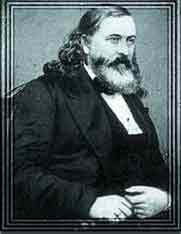
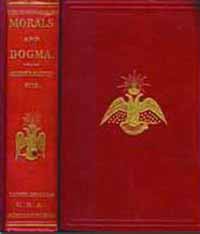
In Morals And Dogma, one of Freemasonry’s most popular books, Grand Master Albert Pike (1809-1891) reveals the Templars’ true purpose:
In 1118, nine Knights Crusaders in the East, among whom were Geoffroi de Saint-Omer and Hughes de Payens, consecrated themselves to religion, and took an oath between the hands of the Patriarch of Constantinople, a See always secretly or openly hostile to that of Rome from the time of Photius. The avowed object of the Templars was to protect the Christians who came to visit the Holy Places: their secret object was the rebuilding of the Temple of Solomon on the model prophesied by Ezekiel…10
The Knights Templar, he continued, were from the very beginning “devoted to . . . opposition to the tiara of Rome and the crown of its Chiefs. . .” The object of the Templars, he said, was to acquire influence and wealth, then to “intrigue and at need fight to establish the Johannite or Gnostic and Kabbalistic dogma. . .”
Adding to the information that Pike provides, the English authors of The Hiram Key, Christopher Knight and Robert Lomas – both Masons – write about the Templars’ origin and purpose. According to them, the Templars discovered “a secret” in the ruins of the temple. This then changed their worldview; and from then on, they adopted un-Christian teachings. Their “protection for pilgrims” became a front behind which they hid their real intent and activities.
There is no evidence that these founding Templars ever gave protection to pilgrims, but on the other hand, we were soon to find that there is conclusive proof that they did conduct extensive excavations under the ruins of Herod’s Temple [as Solomon's temple was called after Herod rebuilt it].11
The authors of The Hiram Key are not the only researchers finding evidence for this. Writes the French historian, Gaetan Delaforge:

At the end of the 19th century, Charles Wilson of the Royal Engineers, began conducting archeological research in Jerusalem. He concluded that the Templars had gone to Jerusalem to study the temple’s ruins and, from the evidence Wilson obtained there, that the Templars had set themselves up in the vicinity of the temple to facilitate excavation and research. The tools that the Templars left behind form part of the evidence Wilson gathered, and are now in the private collection of the Scottish Robert Brydon.13
According to the authors of The Hiram Key, the Templars’ search was not in vain. They made a discovery that altered their perception of and outlook on the world entirely. Despite being born and raised in a Christian society, they adopted wholly un-Christian practices. Black magic rituals and rites and sermons of perverse content were common practice. There is a general consensus among historians that these practices were derived from on the Cabala.
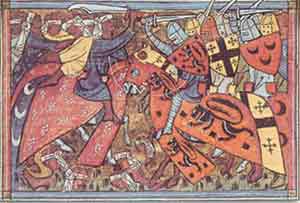
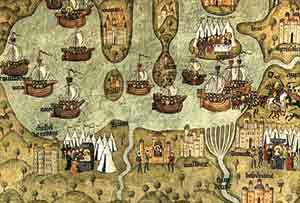
Cabala literally means “oral tradition.” An esoteric branch of mystical Judaism, the Cabala is also a school that researches the secret, hidden and meanings of the Torah (or first five Books of Moses) and other Jewish writings. There’s more to it, however. A close examination of the Cabala reveals that it actually precedes the Torah. A pagan teaching, it continued to exist after the revelation of the Torah and lived on to spread amongst the followers of Judaism. (For further reading on the subject, see Harun Yahya’s Global Freemasonry, Global Publishing, 2002)
For thousands of years, the Cabala has been a resource for sorcery and practitioners of black magic and now enjoys a strong following all around the world, not only in the Jewish community. The Templars were one such group, engaged in research into the Cabala with the goal of acquiring supernatural powers. As the following chapters will examine in detail, they were keen on establishing ongoing relationships with Cabalists in Jerusalem as well as in Europe-a view widely accepted by researchers working on the subject.14
The Development of the Order
With new members joining their order, the Templars soon entered a phase of rapid growth. In 1120, Foulgues d’Angers became a Knight Templar and so did Hugo, Count of Champagne, in 1125. The enigma surrounding the order and its mystic teachings drew the attention of many European aristocrats. At the Council of Troyes in 1128, the Papacy officially recognized the order of the Templars, which further aided their growth.15
Rome’s recognition of the Templars is related in the Turkish Masonic journal, Mimar Sinan:
It’s entirely possible that St. Bernard was duped, and that he never knew the truth about the Templars who, taking advantage of his trustworthiness and status in the Church and throughout Christian Europe, used him for their own ends. He wrote a favorable appraisal of the order, “De Laude Novae Militae” (In Praise of the New Knighthood) following Grand Master Hugues de Payens’s persistent requests for him to do so.17 Around that time, St. Bernard had become the second most influential person in Christendom, after the Pope.
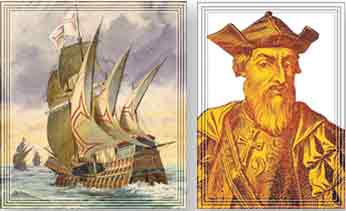
MORE>>
+++
ZenGzrdner.com
Thanks to Zen at: http://www.zengardner.com
- Conspiracy
- Secret Societies
by Peak Crackers - Jun 13, 2014
0 17

by Peak Crackers
Contributor
The history of the Friday the 13th slaughter ..MPC
Bibliotecapleyades
Although the crusaders are commonly thought to have been motivated by their deep Christian faith, crusades were actually wars inspired by avarice. At a time of utmost poverty and misery prevalent in the West, the attractions of the East-in particular, the Muslim societies‘ wealth and prosperity-played on the minds of Europeans, especially those in the Church.
These attractions, bolstered with Christian teachings, begot the crusaders’ mindset, seemly motivated by religion but actually motivated by worldly designs. This is the reason why Christians, who had followed more or less peaceful policies in the previous 1,000 years, suddenly began to display an appetite for war-specifically, the “liberation” of the holy city of Jerusalem and Palestine as a whole.
We can retrace the beginnings of the crusades to November 1095, when Pope Urban II gathered the Council of Clermont. Three hundred members of the clergy convened under his chairmanship. The pacifist doctrines that had dominated Christendom were abandoned, laying the foundations for the conquest. At the close of the Council, Urban II announced this state of affairs in his famous speech to a congregation that comprised all social classes, demanding that Christians stop the infighting and warring among themselves. The Pope called on them-whether rich or poor, aristocrat or peasant-to unite under one banner and to free the holy land from the Muslims. To him, this was “a holy war.”
Historians describe Urban II as a good orator. He intended to incite the Christians against Muslim Turks and Arabs, and succeeded by alleging that the Muslim were assaulting pilgrims and that Christianity’s sacred places were being desecrated.1 Of course, none of this was true.
As historians have confirmed, the Muslims were very tolerant towards Christians and Jews, whom they permitted to pray and worship. All minorities co-existing in the Holy Land benefited equally from this atmosphere of tranquility, created by the moral code of Islam. But because means of communication at the time were terribly primitive compared to today’s, medieval Europeans weren’t aware of this. Owing allegiance to the Vatican in Rome and conducting services in Latin, they knew little about the Eastern Orthodox Church or the Greek-speaking Byzantium, and even less about Islam.
Since what the common people did know amounted to nothing more than hearsay, the Pope found it easy to excite their emotions. Urban II went on to proclaim as an encouragement that for those who participated in the crusade, all sins would be forgiven. The exuberant crowd was distributed fabric crosses to emblazon their garments, and they dispersed to spread the word of the “holy war.”
The overwhelming response to this call made history. In a very short period of time, a massive “crusaders’ army” was assembled, consisting of not only professional warriors, but also ten thousands of ordinary people.
Some historians suggest that the impoverished kings of Christendom, eager to exploit the fabled riches of the East, pressurized the Pope to call a “holy war.” Others find an altogether different motive for Pope Urban II, suggesting that he wished to gain power and prestige for himself at the expense of a rival claiming to be pope. But in reality, all the various kings, princes, aristocrats and others who obliged this call did so for worldly purposes. As Donald Queller of the University of Illinois put it,
On the way, greedy hordes murdered countless Muslims and Jews in the hope of finding gold and jewels. Among crusaders, it was common practice to disembowel their victims in the hopes that they might have swallowed their gold and jewels to hide them. In the Fourth Crusade, their avarice reached the point where they looted Christian Constantinople, scratching gold leaf off the frescos in the Cathedral of Hagia Sophia.“the French knights wanted more land. Italian merchants hoped to expand trade in Middle Eastern ports. . . Large numbers of poor people joined the expeditions simply to escape the hardships of their normal lives.”2
Barbarism of the Crusaders
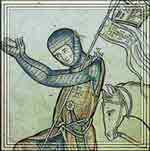 |
A 16th-century crusader |
Raymond IV of Saint-Gilles, Count of Toulouse; Bohemond, Duke of Taranto; Godfrey of Bouillon; Hugh, Count of Vermandois; and Robert, Duke of Normandy commanded this army. Bishop Adhemar of le Puy, the close friend of Urban II, was their spiritual leader.4
After ransacking and setting fire to many settlements and putting countless Muslims to the sword, eventually the crusaders reached Jerusalem in 1099. After a siege of approximately five weeks, the city fell. When the victors finally entered Jerusalem, according to one historian, “They killed all the Saracens and the Turks they found… whether male of female.”5
Crusaders slaughtered everyone they met and looted everything they could get their hands on. They murdered indiscriminately those who had taken refuge in the mosques, whether young or old, and devastated the Muslim and Jewish holy sites and places of worship setting the city’s synagogues aflame, burning alive Jews who had hidden inside. This slaughter continued until no longer could they find anyone to kill.6
One of the crusaders, Raymond of Aguiles, boasts of this incredible cruelty:
Wonderful sights were to be seen. Some of our men (and this was more merciful) cut off the heads of their enemies; others shot them with arrows, so that they fell from the towers; others tortured them longer by casting them into flames. Piles of heads, hands and feet were to be seen in the streets of the city. It was necessary to pick one’s way over the bodies of men and horses. But these were small matters compared to what happened at the Temple of Solomon, a place where religious services are normally chanted . . . in the temple and the porch of Solomon, men rode in blood up to their knees and bridle reins.7
An engraving depicting the crusaders’ occupation of Jerusalem | A Medieval Age drawing of Templars in Jerusalem |


According to another historical source, the number of Muslims pitilessly slaughtered was 40,000.9 Whatever the actual number of the dead, what the crusaders committed in the Holy Land has gone down in history as an example of matchless barbarism.Jerusalem was stormed in July 1099. The rabid ferocity of its sack showed just how little the Church had succeeded in Christianizing atavistic instincts. The entire population of the Holy City was put to the sword, Jews as well as Moslems, 70,000 men, women and children perished in a holocaust, which raged for three days. In places men waded in blood up to their ankles and horsemen were splashed by it as they rode through the streets.8
The first crusade ended with the fall of Jerusalem in 1099. After 460 years of Muslim rule, the Holy Land came under Christian control. The crusaders established a Latin kingdom that stretched from Palestine to Antioch and made Jerusalem its capital city.
Thereafter, the crusaders began struggling to establish themselves in the Middle East. But to sustain the state they had founded, they needed to organize themselves-and to achieve his, they established unprecedented military orders. Members of these orders had emigrated from Europe and, in Palestine, lived a monastic life of sorts. At the same time, they trained for war against the Muslims. One of these orders went down a different route, undergoing a change that would significantly alter the course of history in Europe and-eventually-the world: the Knights Templar.
Founding of the Knights Templar
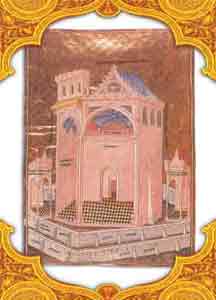 14th-century drawing of the Temple of Solomon |
(A major part of the information we have today on the Templars was recorded by the 12th century historian Guillaume of Tyre.)
The order was founded in 1118 by nine knights: Hugues de Payens, Geoffrey de St. Omer, Rossal, Gondamer, Geoffrey Bisol, Payen de Montdidier, Archambaud de St. Agnat, Andre de Montbard, and the Hugh Conte de Champagne.
Thus was quietly born one of the most talked-about, effective and powerful organizations of Medieval Europe. These nine knights presented themselves to Baldwin II, the Emperor of Jerusalem, asking him to assign them the responsibility of protecting the lives and property of the many Christian pilgrims now flocking to Jerusalem from all over Europe.
The Emperor knew Hugues de Payens, the first Grand Master of the order, well enough to grant the nine their request. Accordingly, the district where Solomon’s Temple once stood (and by then, included the site of the al-Aqsa Mosque, which survives to this day), was allocated to the order of the Templars, giving the order its name.
The Temple Mount thus remained the order’s headquarters for the next 70 years until, following the battle of Hattin, the great Islamic commander Saladin reconquered Jerusalem for the Muslims.
The Templars had established themselves there by choice, because the site of the Temple represented the earthly power of Prophet Solomon; and the remnants of the temple contained big secrets. Protecting the Holy Land and the Christian pilgrims was the official reason the nine founders gave for joining forces and for creating the order in the first place. But the true reason behind it all was altogether different.
The Order’s Mission
At the time, there were a number of other orders of warrior monks in Jerusalem, but all acting according to their charters. Besides training as soldiers, the Knights of St. John – a large organization also known as the Knights Hospitalers – took care of the sick and the poor and were performing other good deeds in the Holy Land. The Templars, however, had taken it upon themselves to protect the lands between Haifa and Jerusalem-a physical impossibility for the nine knights to shoulder all by themselves. Even then, it was now obvious that they sought political as well as economic gains, quite aside from performing works of charity.


The famous Grand Master Albert Pike, with his book titled Morals and Dogma |
In Morals And Dogma, one of Freemasonry’s most popular books, Grand Master Albert Pike (1809-1891) reveals the Templars’ true purpose:
In 1118, nine Knights Crusaders in the East, among whom were Geoffroi de Saint-Omer and Hughes de Payens, consecrated themselves to religion, and took an oath between the hands of the Patriarch of Constantinople, a See always secretly or openly hostile to that of Rome from the time of Photius. The avowed object of the Templars was to protect the Christians who came to visit the Holy Places: their secret object was the rebuilding of the Temple of Solomon on the model prophesied by Ezekiel…10
The Knights Templar, he continued, were from the very beginning “devoted to . . . opposition to the tiara of Rome and the crown of its Chiefs. . .” The object of the Templars, he said, was to acquire influence and wealth, then to “intrigue and at need fight to establish the Johannite or Gnostic and Kabbalistic dogma. . .”
Adding to the information that Pike provides, the English authors of The Hiram Key, Christopher Knight and Robert Lomas – both Masons – write about the Templars’ origin and purpose. According to them, the Templars discovered “a secret” in the ruins of the temple. This then changed their worldview; and from then on, they adopted un-Christian teachings. Their “protection for pilgrims” became a front behind which they hid their real intent and activities.
There is no evidence that these founding Templars ever gave protection to pilgrims, but on the other hand, we were soon to find that there is conclusive proof that they did conduct extensive excavations under the ruins of Herod’s Temple [as Solomon's temple was called after Herod rebuilt it].11
The authors of The Hiram Key are not the only researchers finding evidence for this. Writes the French historian, Gaetan Delaforge:
The real task of the nine knights was to carry out research in the area, in order to obtain certain relics and manuscripts which contain the essence of the secret traditions of Judaism and ancient Egypt…12In The Hiram Key, Knight and Lomas conclude that the Templars excavated items of such importance at the site that they adopted a wholly new world view. Many other historians draw similar conclusions. The order’s founders and their successors were all of Christian upbringing, yet their philosophy of life was not a Christian one.

Some seals and maps from the era of the crusades: From left to right: A sketch showing the centers of religious importance in Jerusalem; Seal of Frederick III; another map of Jerusalem; front and back of the crusader king Baldwin’s seal; front and back of the Cesaree Archbishop’s seal. |
According to the authors of The Hiram Key, the Templars’ search was not in vain. They made a discovery that altered their perception of and outlook on the world entirely. Despite being born and raised in a Christian society, they adopted wholly un-Christian practices. Black magic rituals and rites and sermons of perverse content were common practice. There is a general consensus among historians that these practices were derived from on the Cabala.


Muslims and Christians during one of their clashes | Map of Palestine showing the crusades |
For thousands of years, the Cabala has been a resource for sorcery and practitioners of black magic and now enjoys a strong following all around the world, not only in the Jewish community. The Templars were one such group, engaged in research into the Cabala with the goal of acquiring supernatural powers. As the following chapters will examine in detail, they were keen on establishing ongoing relationships with Cabalists in Jerusalem as well as in Europe-a view widely accepted by researchers working on the subject.14
The Development of the Order
With new members joining their order, the Templars soon entered a phase of rapid growth. In 1120, Foulgues d’Angers became a Knight Templar and so did Hugo, Count of Champagne, in 1125. The enigma surrounding the order and its mystic teachings drew the attention of many European aristocrats. At the Council of Troyes in 1128, the Papacy officially recognized the order of the Templars, which further aided their growth.15
 A ship carrying the symbols of the Templars |
In the order’s development and progress, the single most important person is undoubtedly St. Bernard (1090-1153). Becoming the Abbot of Clairvaux at the tender age of 25, he had risen in the Catholic Church’s hierarchy to become a respectable spokesman for the Church, influential with the Pope as well as the French King. It must be added that he was a cousin of Andre de Montbard, one of the founders of the order. The Templars’ Rule was written according the principles of the Cistercian Order to which St. Bernard belonged-or short, the Templars adopted the rules and organization of this monastic order. But most of their rule never went any further than being written down and recognized: The Templars continued in their un-Christian practices that the Church had strictly forbidden.To obtain the Papacy’s approval of the order, Grand Master Hugues de Payens, accompanied by five knights, paid a visit to Pope Honorius II. The Grand Master submitted two letters-one from the patriarch of Jerusalem, the other from King Baudoin II-setting forth the order’s honorable mission, its services to Christianity, and many another good deed.
On the 13th of January, 1128, the Council of Troyes convened. Present were many high-ranking officials of the Church, including the Abbot of Citeaux, Etienne Harding, and Bernard, the Abbot of Clairvaux. The Grand Master presented his case once more. It was agreed that the Church would officially recognize the order under the name of Poor Fellow-Soldiers of Christ. Bernard was commissioned to prepare a Rule for the Templars. So, the order was officially founded.16
It’s entirely possible that St. Bernard was duped, and that he never knew the truth about the Templars who, taking advantage of his trustworthiness and status in the Church and throughout Christian Europe, used him for their own ends. He wrote a favorable appraisal of the order, “De Laude Novae Militae” (In Praise of the New Knighthood) following Grand Master Hugues de Payens’s persistent requests for him to do so.17 Around that time, St. Bernard had become the second most influential person in Christendom, after the Pope.

The famous explorer Vasco de Gama was a Templar who set sail to discover new ocean trading routes. Above: Vasco de Gama’s ship with the Templars Cross on its sails. |
+++
ZenGzrdner.com
Thanks to Zen at: http://www.zengardner.com






 Sat Mar 23, 2024 11:33 pm by globalturbo
Sat Mar 23, 2024 11:33 pm by globalturbo

